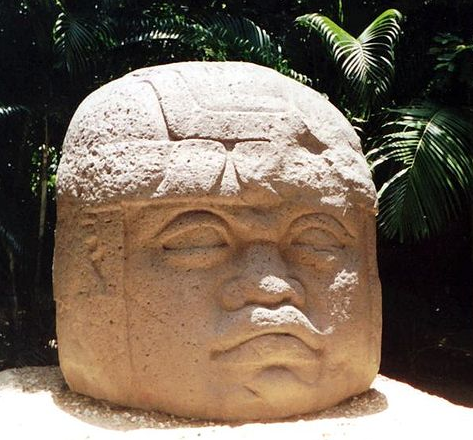Little-known curiosities about the ancient Olmecs
Their rise to prominence, the zenith of their cultural influence, and their equally mysterious decline present an enigmatic narrative that continues to captivate the modern mind.
Recognized as the “Mother Culture” of Mesoamerica, the ancient Olmec civilization flourished in the timeline between approximately 1200 to 400 B.C. This period, steeped in the dawning era of cultural complexity, bears testimony to their trailblazing contributions and advancements in various fields. In this article, I bring you ten little-known curiosities about the ancient Olmecs.
From their monumental artworks and an intriguing cosmology to the nascent stages of written language and sophisticated urban planning, the Olmecs have left indelible marks that have intrigued archaeologists, historians, and history enthusiasts around the globe. Their rise to prominence, the zenith of their cultural influence, and their equally mysterious decline present an enigmatic narrative that continues to captivate the modern mind.
Simultaneously, the echoes of their enduring legacy can be traced to the cornerstone of subsequent Mesoamerican cultures, notably the Maya and the Aztecs. As the ‘Mother Culture,’ the Olmecs seeded the foundational elements that later blossomed in these cultures, painting a fascinating panorama of cultural continuity and evolution.
Colossal Stone Heads – Markers of Power and Prestige
The Olmecs are perhaps best known for the enormous stone heads they sculpted. Seventeen such heads have been discovered, each painstakingly carved from a single basalt boulder. These imposing creations, some of which weigh up to 50 tons and stand almost 10 feet tall, are believed to represent powerful Olmec rulers and signify their societal dominance.
The Ancient Olmecs: Pioneer Mesoamerican Civilization
The Olmec civilization was the first significant Mesoamerican civilization. Predating the Maya and the Aztecs, the Olmecs laid the foundation for subsequent cultures, influencing their religious rituals, architecture, and artwork, forming the bedrock of Mesoamerican civilization.
Their Written Language
The Olmecs had a form of written language, a precursor to the writing systems developed by later Mesoamerican cultures. While our understanding of this system remains limited due to the small number of remaining inscriptions, the evidence still underlines the Olmec’s innovative capabilities.
The Rubber People
‘Olmec’ translates to ‘rubber people’ in the Nahuatl language. This name was bestowed upon them because they are believed to have been the first to exploit the latex from rubber trees to produce objects like rubber balls, which were central to their religious rituals and games.
Mystical Jaguar Worship
Jaguars held deep religious and cultural significance for the Olmecs. Their mythology often portrays the were-jaguar, a creature that is part-human, part-jaguar. The presence of this motif across various forms of their art suggests it was central to their belief system.
Advanced Knowledge of Astronomy
The Olmec’s astronomical observations and calendrical system later influenced the Maya civilization. They used their knowledge to predict solar and lunar eclipses, which would have played a crucial role in their religious rituals and agricultural activities.
Construction Techniques
The Olmecs’ construction techniques were impressive, particularly their ability to transport huge stones across vast distances without the wheel or beasts of burden. These techniques would later be used by other Mesoamerican civilizations.
The Olmec Diet
The Olmecs had a diverse diet, which included maize, beans, squash, fish, and various types of meat. They also cultivated cacao and may have been the first civilization to make chocolate.
Early Urban Planners
The Olmec cities of La Venta and San Lorenzo were highly planned and centered around complex sacred areas. These sites, featuring monumental sculptures and complex residential compounds, provide evidence of an organized society with defined social stratification.
Mysterious Decline
The decline of the Olmec civilization remains a mystery. Some theories suggest environmental changes, while others point to social unrest or invasion. Despite this, their influence endured in the civilizations that followed, marking the Olmecs as a significant piece of Mesoamerican heritage.
The Olmecs’ remarkable achievements and influences highlight their importance in human history’s annals. As we continue to unearth their past, these enigmatic people remain a testament to the enduring human spirit of innovation, resilience, and cultural development.
Related Post
A shocking documentary proves that mermaids do exist
SHOCKING Revelation: Thuya, Mother of Queen Tiye, Was the Grandmother of Akhenaten and Tutankhamun—What Ancient Egyptian Secrets Did She Leave Behind?
Breaking News: Astonishing Discoveries at Karahan Tepe Confirm an Extraterrestrial Civilization is Hiding on Earth, and NO ONE Knows!
Breaking News: Researchers FINALLY Discover U.S. Navy Flight 19 After 75 Years Lost in the Bermuda Triangle!
NASA’s Secret Investigation: Uncovering the Astonishing Mystery of the UFO Crash on the Mountain!
Explosive UFO Docs LEAKED: Startling Proof That Aliens Ruled Ancient Egypt!
:max_bytes(150000):strip_icc()/Olmec_1-58d925da3df78c5162d1ba64.jpg)

:max_bytes(150000):strip_icc()/Olmec_9-58d929a33df78c5162d1e4b9.jpg)